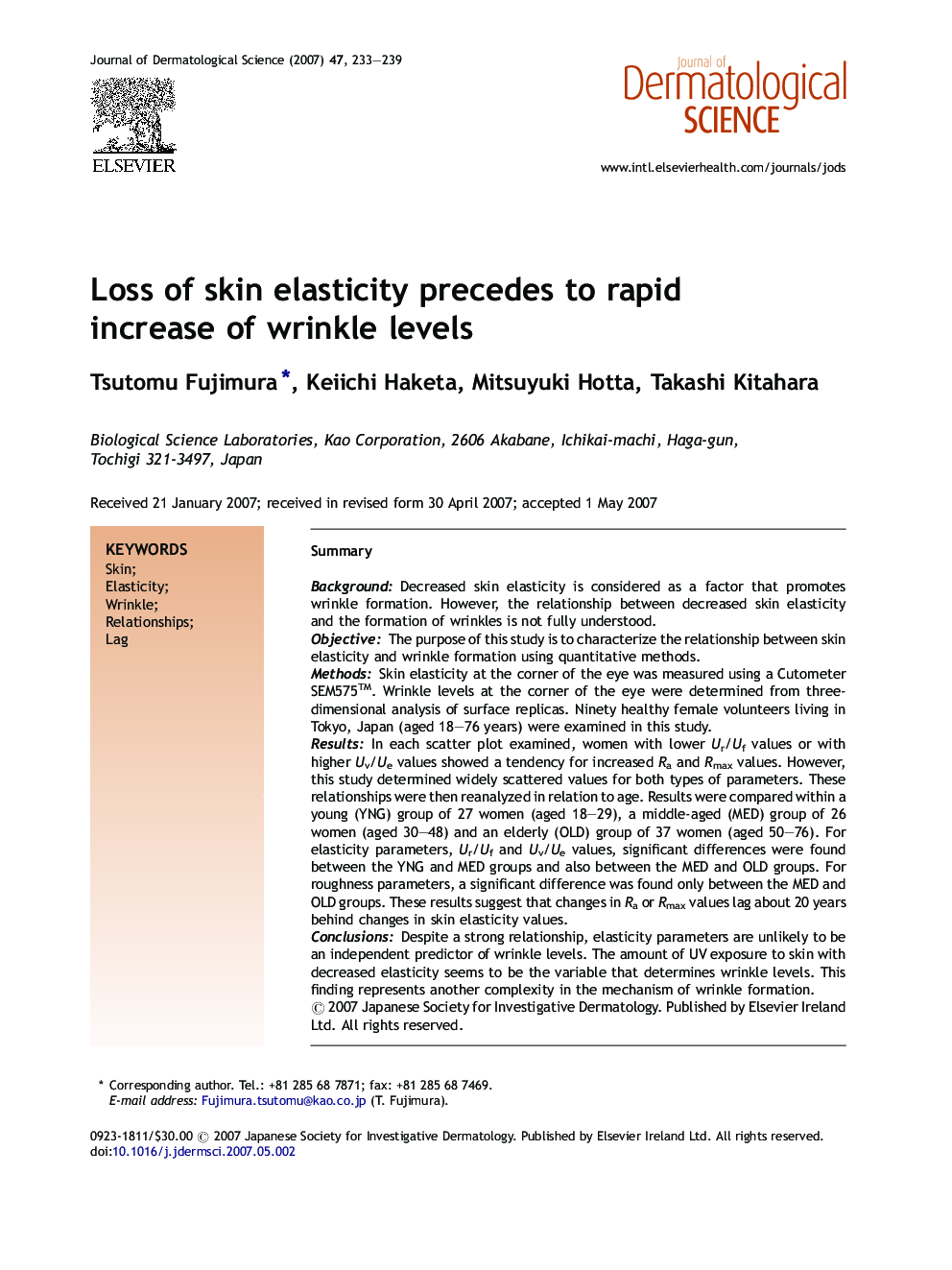| Article ID | Journal | Published Year | Pages | File Type |
|---|---|---|---|---|
| 3214359 | Journal of Dermatological Science | 2007 | 7 Pages |
SummaryBackgroundDecreased skin elasticity is considered as a factor that promotes wrinkle formation. However, the relationship between decreased skin elasticity and the formation of wrinkles is not fully understood.ObjectiveThe purpose of this study is to characterize the relationship between skin elasticity and wrinkle formation using quantitative methods.MethodsSkin elasticity at the corner of the eye was measured using a Cutometer SEM575™. Wrinkle levels at the corner of the eye were determined from three-dimensional analysis of surface replicas. Ninety healthy female volunteers living in Tokyo, Japan (aged 18–76 years) were examined in this study.ResultsIn each scatter plot examined, women with lower Ur/Uf values or with higher Uv/Ue values showed a tendency for increased Ra and Rmax values. However, this study determined widely scattered values for both types of parameters. These relationships were then reanalyzed in relation to age. Results were compared within a young (YNG) group of 27 women (aged 18–29), a middle-aged (MED) group of 26 women (aged 30–48) and an elderly (OLD) group of 37 women (aged 50–76). For elasticity parameters, Ur/Uf and Uv/Ue values, significant differences were found between the YNG and MED groups and also between the MED and OLD groups. For roughness parameters, a significant difference was found only between the MED and OLD groups. These results suggest that changes in Ra or Rmax values lag about 20 years behind changes in skin elasticity values.ConclusionsDespite a strong relationship, elasticity parameters are unlikely to be an independent predictor of wrinkle levels. The amount of UV exposure to skin with decreased elasticity seems to be the variable that determines wrinkle levels. This finding represents another complexity in the mechanism of wrinkle formation.
